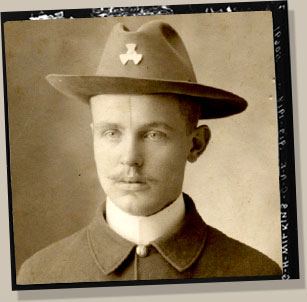
Dr. R.M. Anderson: Arctic Zoologist
History has missed making a real acquaintance with a fascinating individual whose extensive northern research forms the base for our knowledge of Canadian Arctic biology. Dr. Rudolph Martin Anderson’s work was critical to the development of Canadian government policies on the conservation of northern wildlife. The information and specimens he collected are still routinely consulted. His extensive notes on traditional knowledge, place names, and the people he encountered are an untapped treasure of information which complement northern oral histories.
Scientist, exploration leader, military man, civil servant, and family man, Anderson spent in seven winters and ten summers north of Canada’s Arctic Circle. He first accepted an invitation from his former classmate, anthropology student Vilhjalmur Stefansson, to join an expedition to the Canadian Arctic in 1908. For the next four years he collected bird and mammal specimens in the western Arctic, made an extensive series of photographs, and collected information on an incredible variety of topics.
A year later, at the start of the Canadian Arctic Expedition of 1913-1918, Anderson was appointed Leader of the Southern Party. It was upon his shoulders that much of the work of organizing supplies and equipment for the whole Expedition fell. For the next three years he was involved in all other aspects of the Expedition, from overseeing the Southern Party, navigating, and even acting as Captain, while he was carrying out his extensive scientific work. He was also an accomplished photographer, adding some 800 photographs to the Expedition's records.
He journeyed north one final time with the Eastern Arctic Patrol in 1928, by then Chief of the Biology Division of the National Museum of Canada. He also thoroughly criss-crossed the rest of Canada as Chief Biologist, wrote numerous publications still in use today, and established his wife and three daughters in Ottawa by winter and Blue Sea Lake in Quebec by summer.
